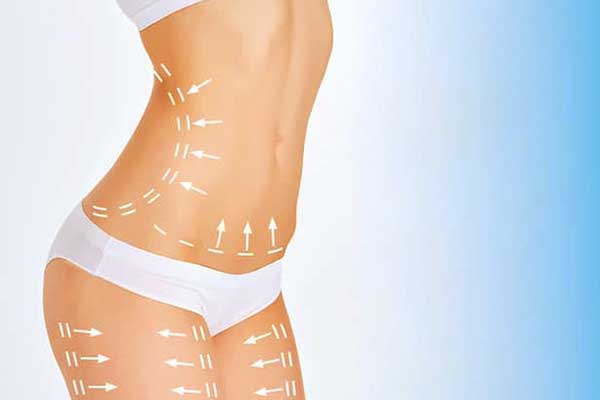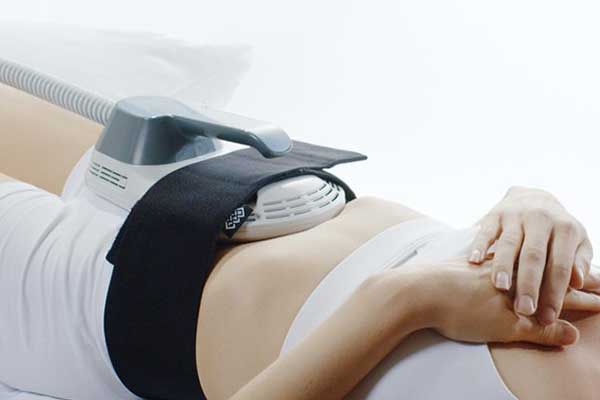Can Fat Freezing Go Wrong?
Fat freezing, or cryolipolysis (often known by the brand name CoolSculpting), has gained popularity for its non-invasive way to target stubborn fat areas. But can fat freezing go wrong? This innovative method, while effective for many, does come with risks and side effects that aren’t always obvious.
In this article, we’ll explore the full spectrum of benefits, risks, and considerations surrounding fat-freezing treatments. By the end, you’ll have a complete guide on what to expect, who should avoid it, and how to prepare if you decide to take the plunge.
What is Fat Freezing? An Overview of the Technology
Cryolipolysis is the technical term for fat freezing. Developed as a way to destroy fat cells by exposing them to extremely cold temperatures, this process triggers an inflammatory response in fat tissue. The body then gradually removes the dead cells over several weeks. Unlike traditional surgical methods, cryolipolysis is non-invasive and uses controlled cooling to target fat cells without damaging surrounding tissue. For some, it’s a miracle treatment – for others, it’s not without complications.
Are you looking for the best doctor and clinic?
Affordable packages for your budget…
Let us assist you on an enjoyable journey
How Does Fat Freezing Work?
Fat freezing is primarily conducted in two steps:
- Controlled Cooling: Specific areas are exposed to cold temperatures between -10°C to -15°C, which triggers cell death in fat tissue.
- Natural Elimination: Over the following weeks, the body naturally removes dead cells through the lymphatic system, resulting in a gradual reduction of fat.
Areas commonly treated: abdomen, thighs, under the chin, upper arms, and back flanks.
Think of cryolipolysis as “deflating” pockets of fat – the cooling doesn’t melt them away instantly but instead sets off a natural process of elimination.
Can Fat Freezing Go Wrong? Risks and Complications
Despite the appeal, there are several side effects and potential complications to consider.
1. Short-Term Side Effects
- Redness and Swelling: Due to the intense cooling, treated areas may experience temporary redness and swelling.
- Bruising and Tingling: Some report tingling or numbness, which can persist for a few days.
- Pain and Numbness: Post-treatment numbness and discomfort are common, especially around the abdomen. This might last anywhere from days to weeks.
2. Paradoxical Adipose Hyperplasia (PAH)
Paradoxical adipose hyperplasia, or PAH, is a rare but significant side effect. Instead of shrinking, the treated area enlarges, resulting in an uneven, hardened bulge that can only be corrected surgically.
PAH is rare but striking – imagine intending to eliminate fat but instead seeing it expand! This is why understanding your risk profile is key before treatment.
3. Skin Burns and Frostbite
Poorly calibrated devices or untrained technicians can lead to burns or frostbite. Always ensure your provider uses FDA-approved equipment and follows strict safety guidelines.
4. Hyperpigmentation and Scarring
Post-inflammatory hyperpigmentation (PIH) can occur if the treatment results in skin irritation, while severe cases may cause minor scarring.
5. Nerve Damage
Although less common, nerve damage can occur, causing prolonged pain or sensitivity in the treated area. The risk increases with improper equipment settings.
Tip: Choose a provider with reputable training and experience to minimize the risk of serious complications.
Comparison Table: Fat Freezing vs. Other Non-Surgical Fat Reduction Treatments
| Treatment | Technology | Duration | Common Risks | Cost |
|---|---|---|---|---|
| Fat Freezing | Cryolipolysis | 35-60 mins | PAH, numbness, swelling | $500-$1,500 |
| Laser (SculpSure) | Laser energy | 25 mins | Redness, mild discomfort | $600-$1,500 |
| Ultrasound (UltraShape) | Ultrasound waves | 1 hour | Redness, tingling | $700-$1,700 |
| Radiofrequency | Radiofrequency energy | 30 mins | Warm sensation, swelling | $400-$1,000 |
Is Fat Freezing Right for You?
1. Who Should Avoid Fat Freezing?
Certain individuals should avoid cryolipolysis altogether:
- Cold Allergy Sufferers: Those with severe cold allergies may experience adverse reactions.
- People with Certain Medical Conditions: Patients with neuropathy, pacemakers, or immune system disorders should seek alternatives.
- Those with Pre-Existing Hernias: This procedure can aggravate existing hernias or lead to new ones.
2. Suitable Candidates for Fat Freezing
- Individuals close to their ideal weight but with stubborn fat pockets.
- Those looking for a non-surgical, low-downtime solution.
- People without skin conditions or immune system issues.
3. Preparation and Aftercare
Before the Procedure:
- Avoid sun exposure, as tanned skin is more susceptible to irritation.
- Hydrate well in the days leading up to treatment.
After the Procedure:
- Use cold compresses for swelling.
- Avoid intense exercise for a day or two to reduce redness.
- Follow any instructions from your provider closely, including how to manage any lingering numbness or tingling.
Success Stories and Stories of Caution
Some patients see results after just a few treatments, enjoying noticeable reductions in fat in previously resistant areas. However, there are also stories of PAH and other complications, especially when the treatment was provided by under-qualified technicians or with non-certified devices.
Consider Lisa, who sought treatment for abdominal fat. Three months post-treatment, she noticed her midsection was actually more pronounced. Her technician hadn’t disclosed the rare PAH risk. Although Lisa eventually corrected this surgically, the experience taught her the importance of understanding all potential outcomes and the critical role of expert providers.
Conclusion: Final Thoughts and Essential Considerations
So, can fat freezing go wrong? Yes, while generally safe, cryolipolysis does have risks that should be weighed carefully. Before proceeding, ensure you’re an ideal candidate, understand the potential risks, and select a qualified provider with a proven track record. Remember, fat freezing isn’t a magic bullet for weight loss but a tool to complement a healthy lifestyle.
Curious about alternatives? Check out additional resources or consult a certified specialist to see what’s right for your body and goals.
FAQ about Can Fat Freezing Go Wrong?
1. How effective is fat freezing?
- Fat freezing can reduce fat thickness by 10–25% in treated areas but results vary.
2. How long does it take to see results?
- Full results appear around 12–16 weeks post-treatment as the body naturally expels dead cells.
3. Does it hurt?
- Mild discomfort is normal, with some experiencing tingling, numbness, or pain that fades within days.
4. How much does it cost?
- Prices range from $500 to $1,500 per area, depending on provider and location.
Do you want the best clinic and doctor
A price package suitable for your budget
Let us help you have an enjoyable journey
This comprehensive guide should help you make an informed decision about fat freezing. Ultimately, the goal isn’t just a slimmer you but a safer journey in getting there!






